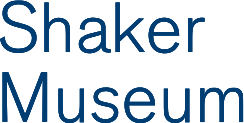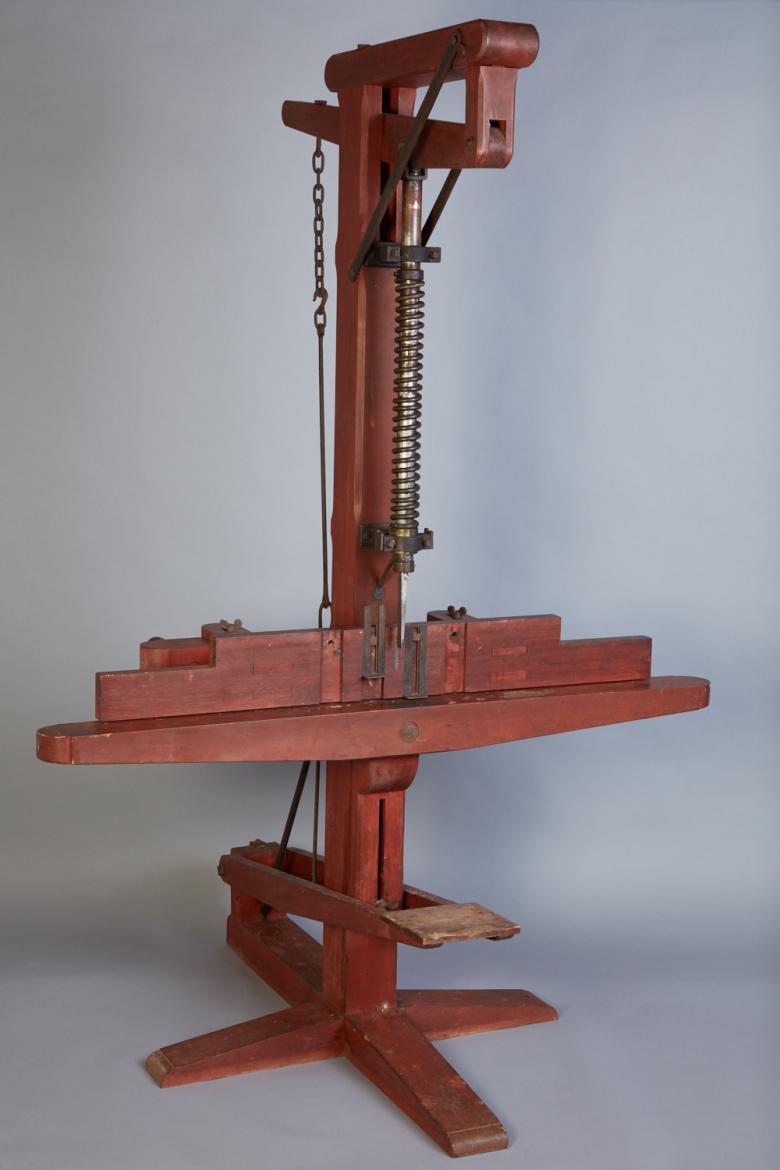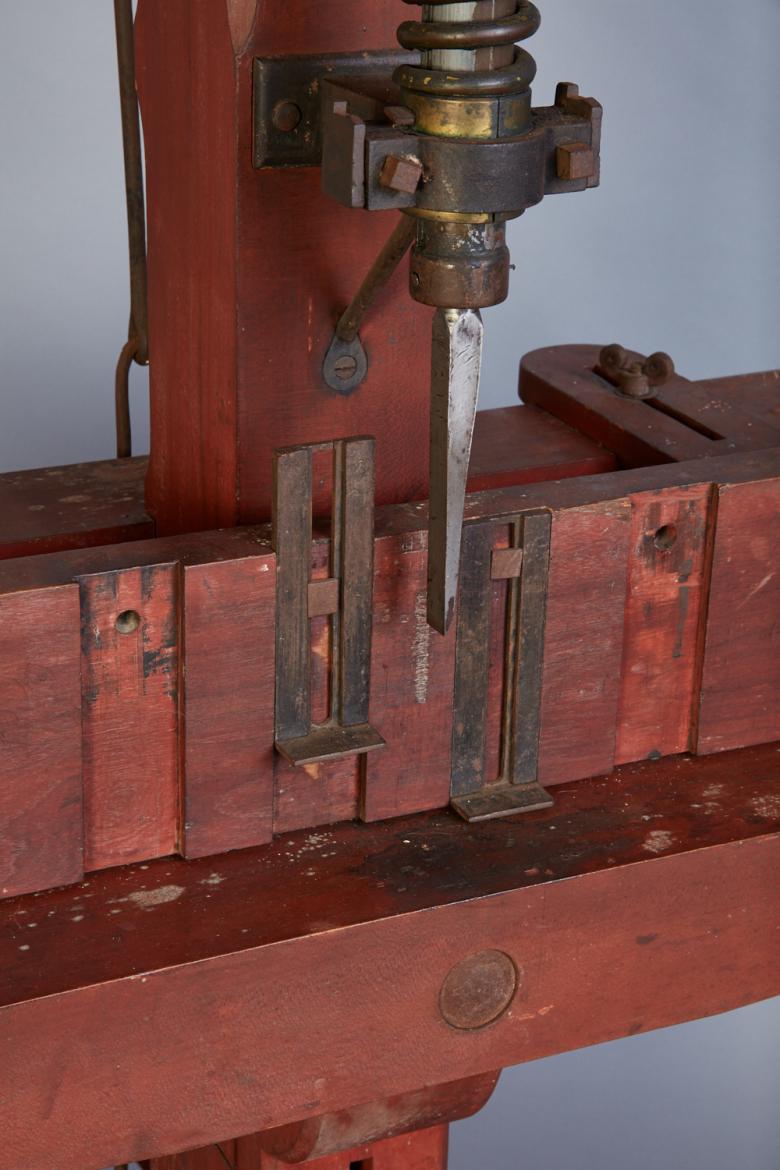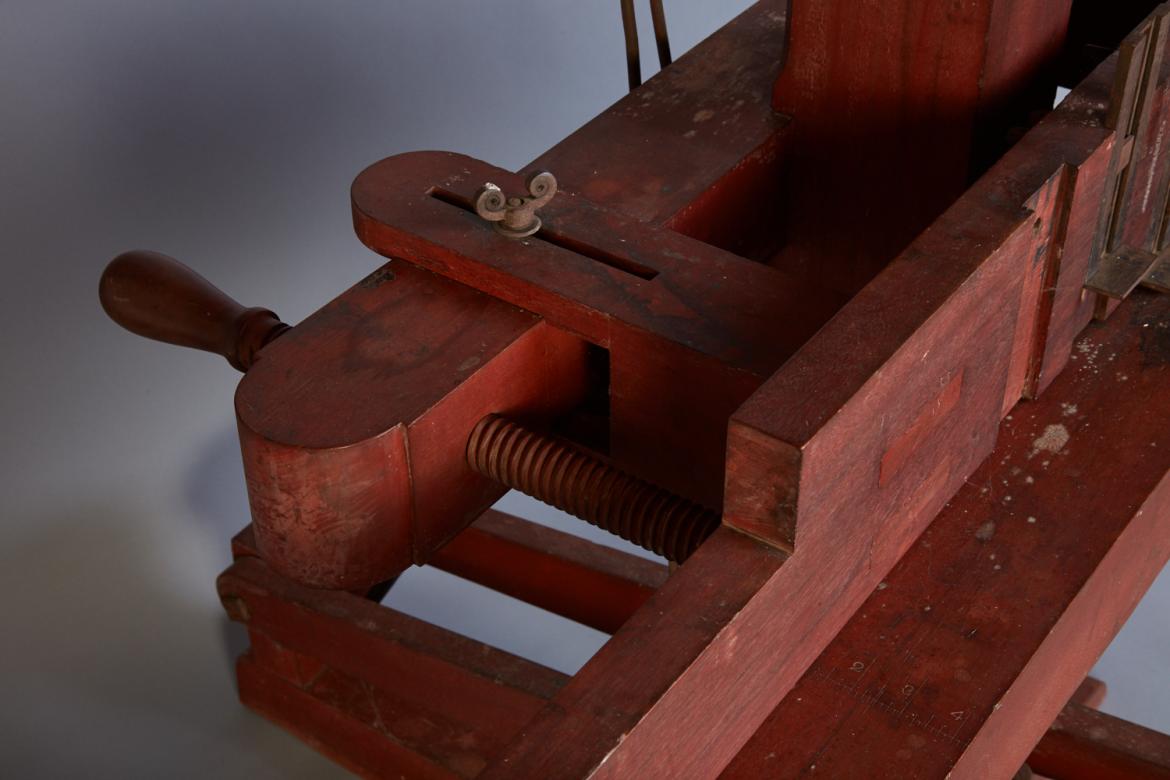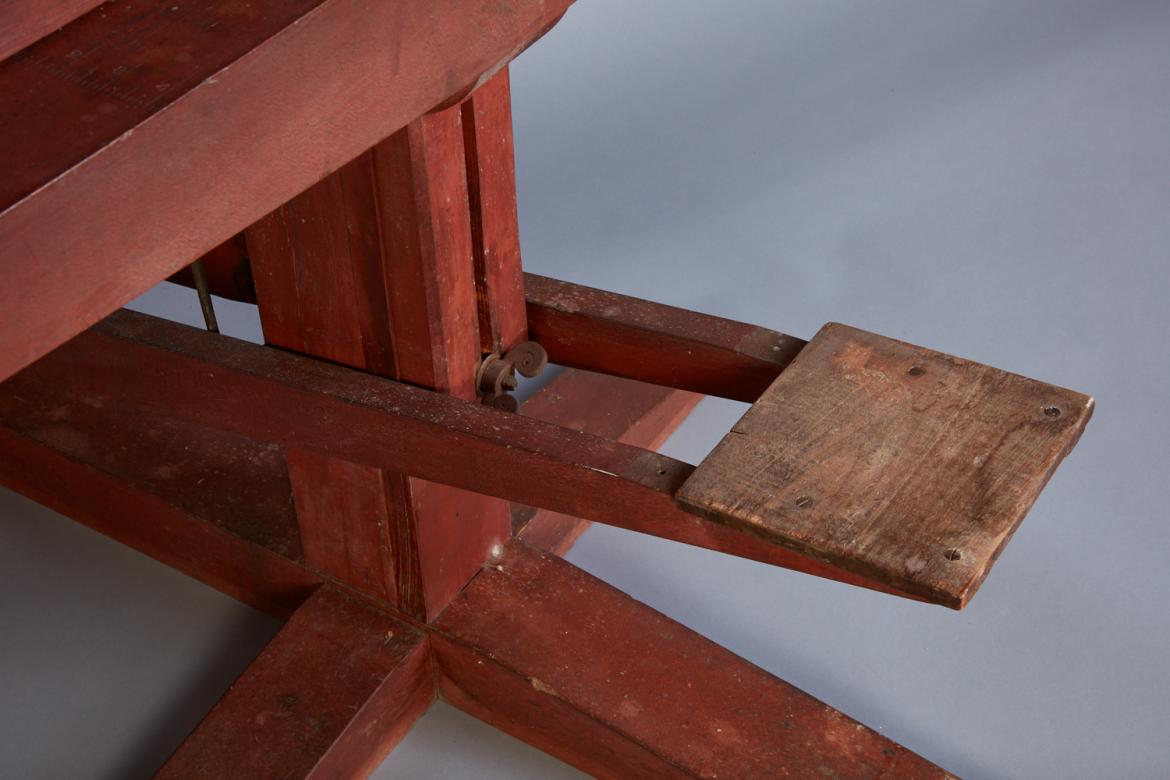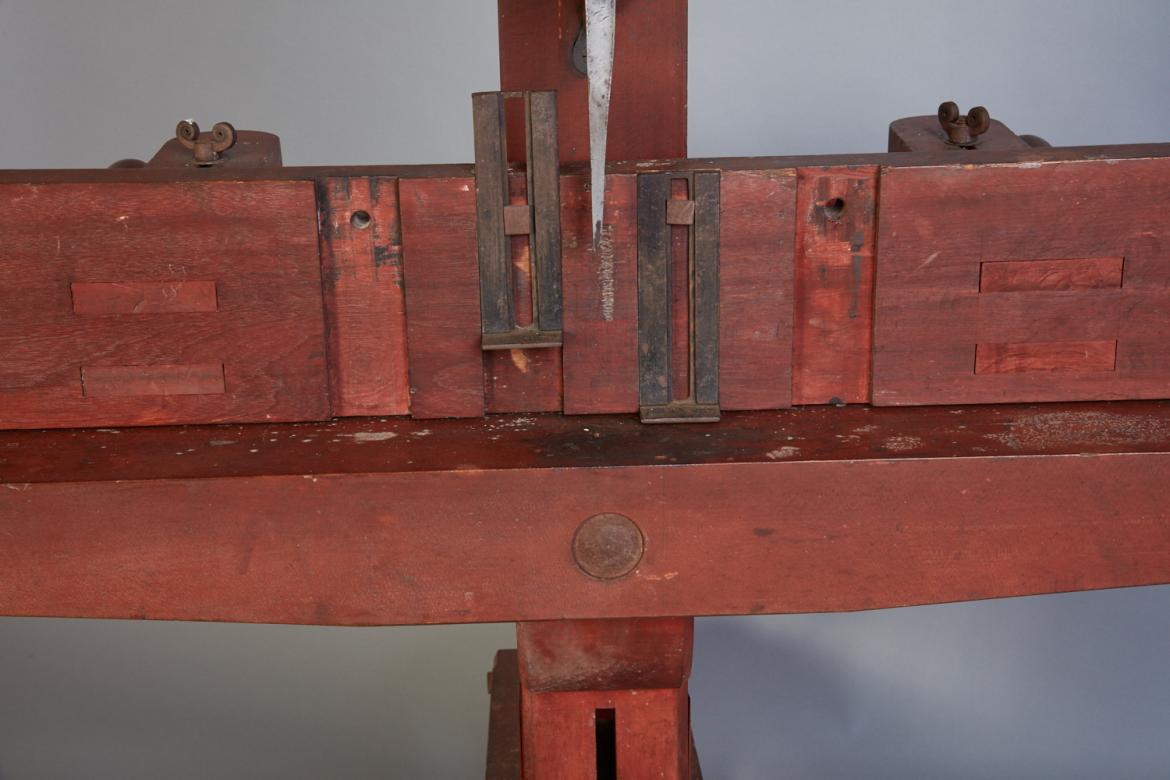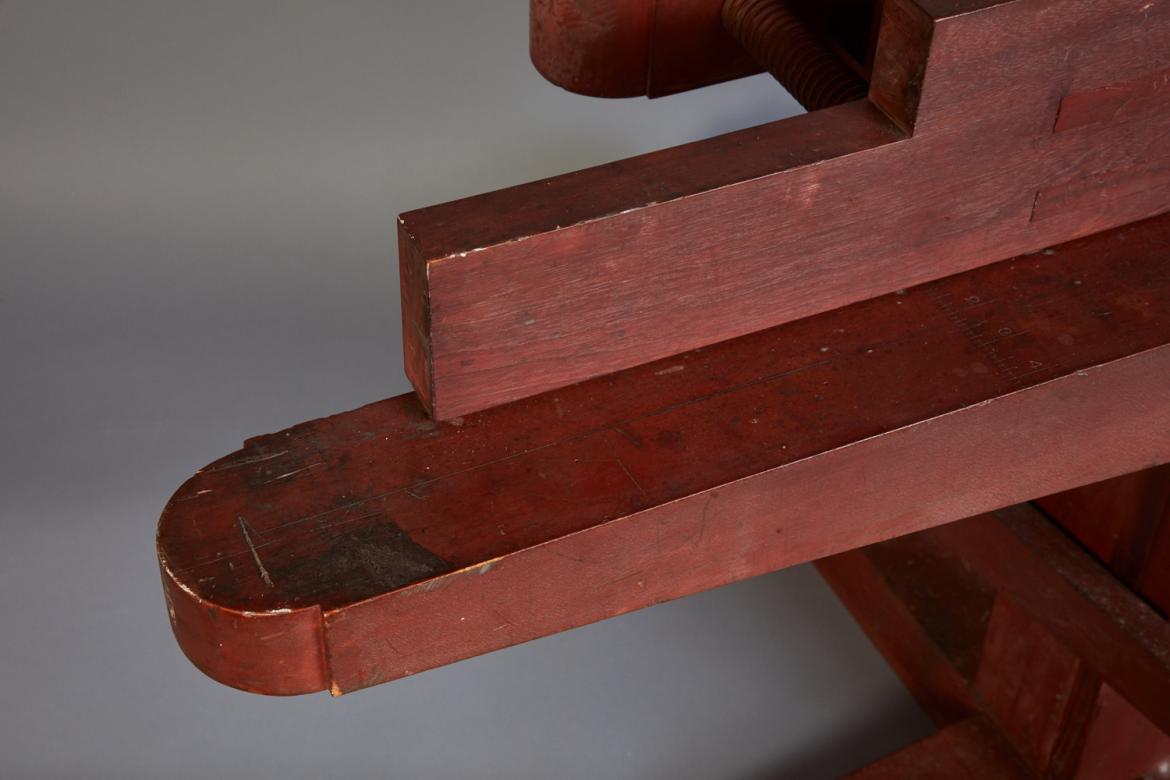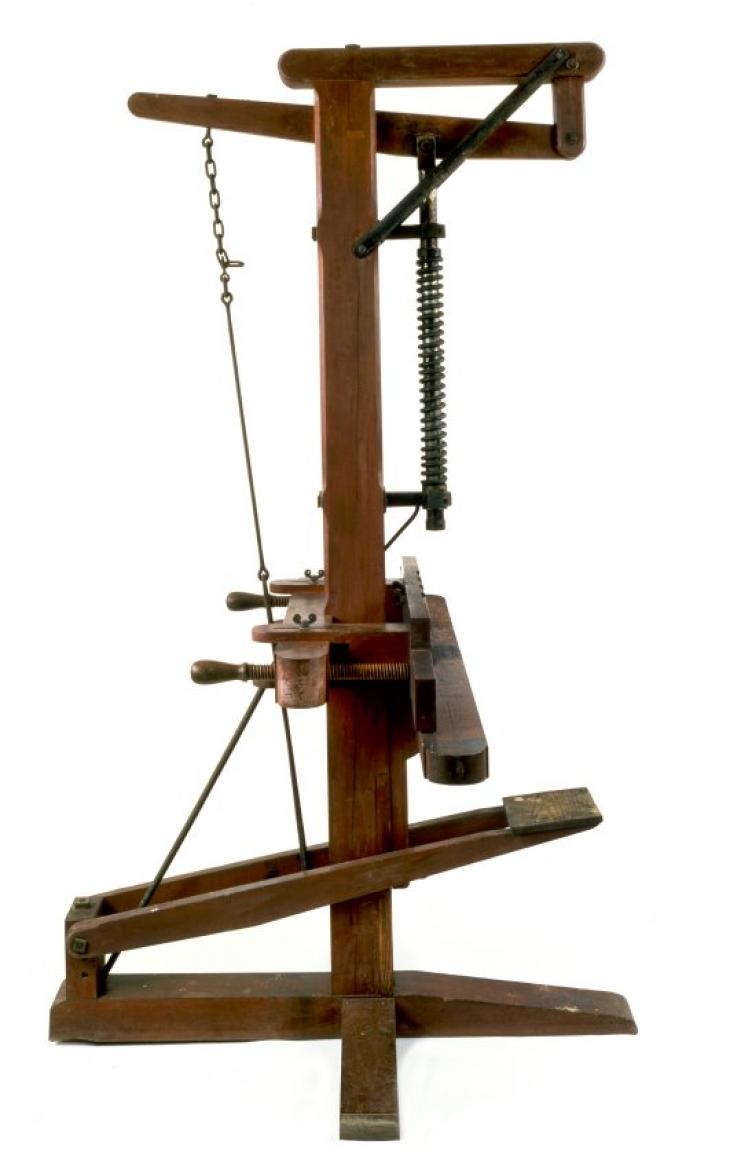Mortiser
Foot powered mortising machine made by Brother Orren Haskins, Church Family, Mount Lebanon, NY
1842
Description
Foot-powered mortising machine with spring mechanism for lifting the blade, attached to the arm at the top of the post and connected by rods to the foot treadle which lowers the blade. Long, narrow, horizontal bed with markings in front of each clamp which measure 4 1/2". Painted or washed red.
Notes
The construction of large communal Shaker buildings required joiners to make numerous windows and doors. Both of these items would be assembled using mortise and tenon joints, that is, two pieces of wood joined by inserting a square or rectangular tenon cut on the end of one piece of wood into a matching hole or mortise in the other piece. A typical four-panel door requires the joiner to make ten such joints. To make the cutting of the mortises easier, Orren Haskins of the Church Family, Mount Lebanon, traveled to Pittsfield, MA, on January 30, 1842, with two other Shakers "to see a morticeing (sic) machine with the expectation of making one." during the month of February, Haskings was at work, "making a morticeing machine, to mortice the Doors and window sash for the new shop that is to be erected next summer." Arba Noyes, a blacksmith for the family, did the iron work for the machine.[1] Although not inscribed by Haskins, metal hardware used on the machine dates to the period when he built the first mortiser for the Church Family. The mortising machine employs the mechanical advantage of compound levers and the weight of the operator transferred through a foot to force a chisel into the wood to create the mortise. Often a single hole is drilled at one end of the mortise to provide a space for the wood shavings as the operator makes repeated chisel cuts along the length of the mortise. The heavy spring pulls the chisel back out of the wood ready for the next stroke. The wooden hand screws adjust a fence to properly position the materials being mortised. [1] Giles B. Avery, "A Journal of Domestic events and Transactions In a brief & conclusive form. Commenced Feby 7th 1838," OclWHi, Shaker Collection, V:B-107. To learn more, read this blog post: https://shakerml.org/5911-2/
New York Mount Lebanon Church Family

